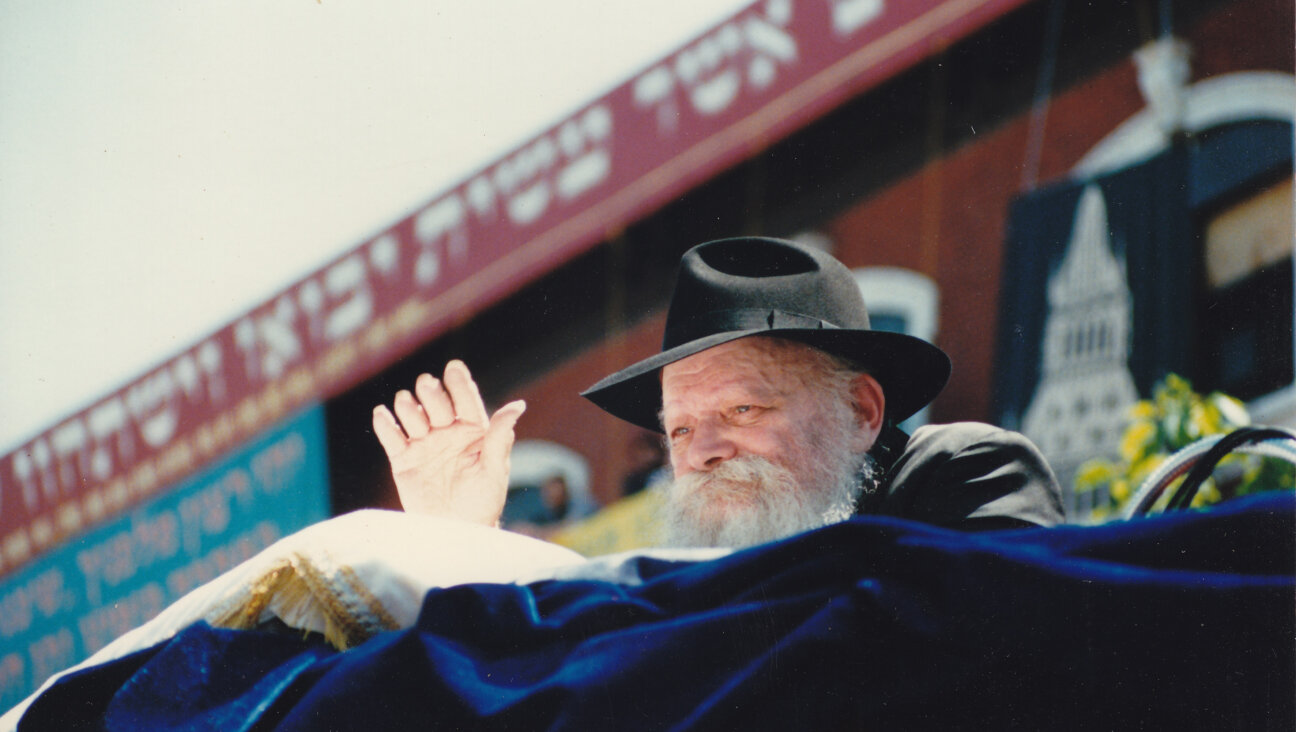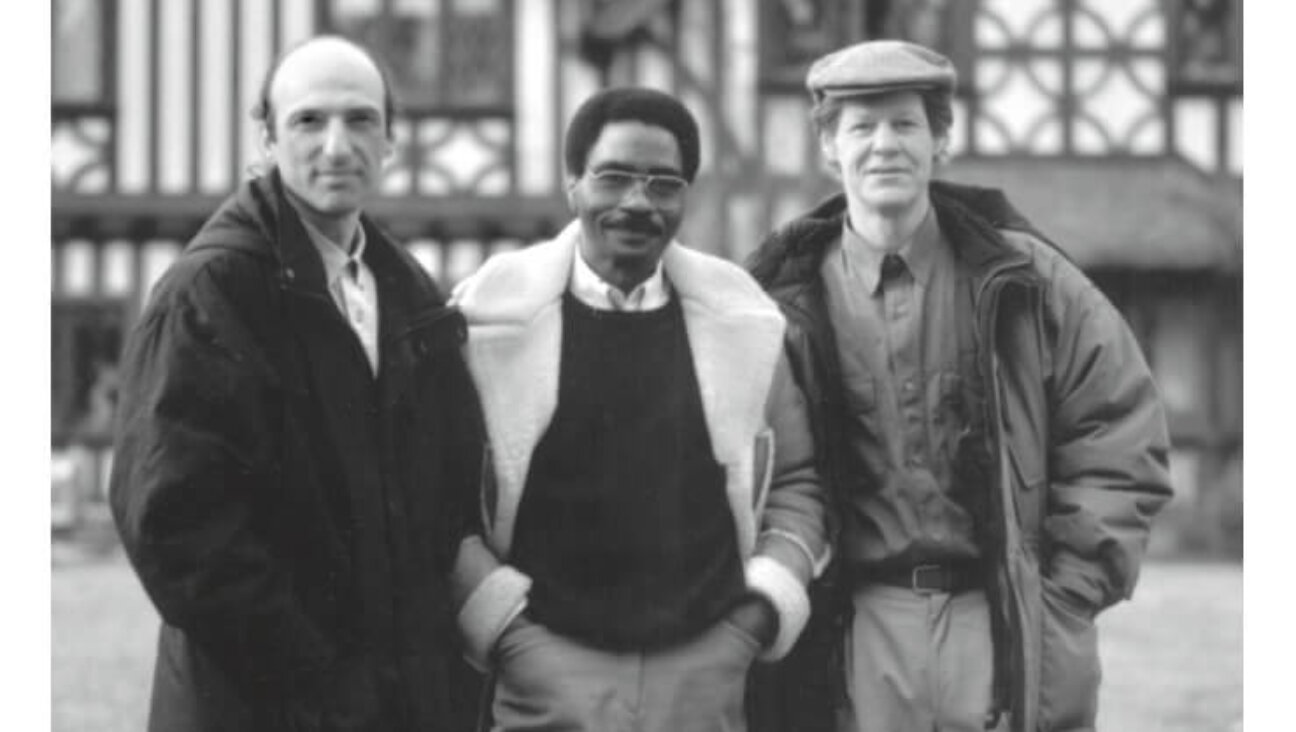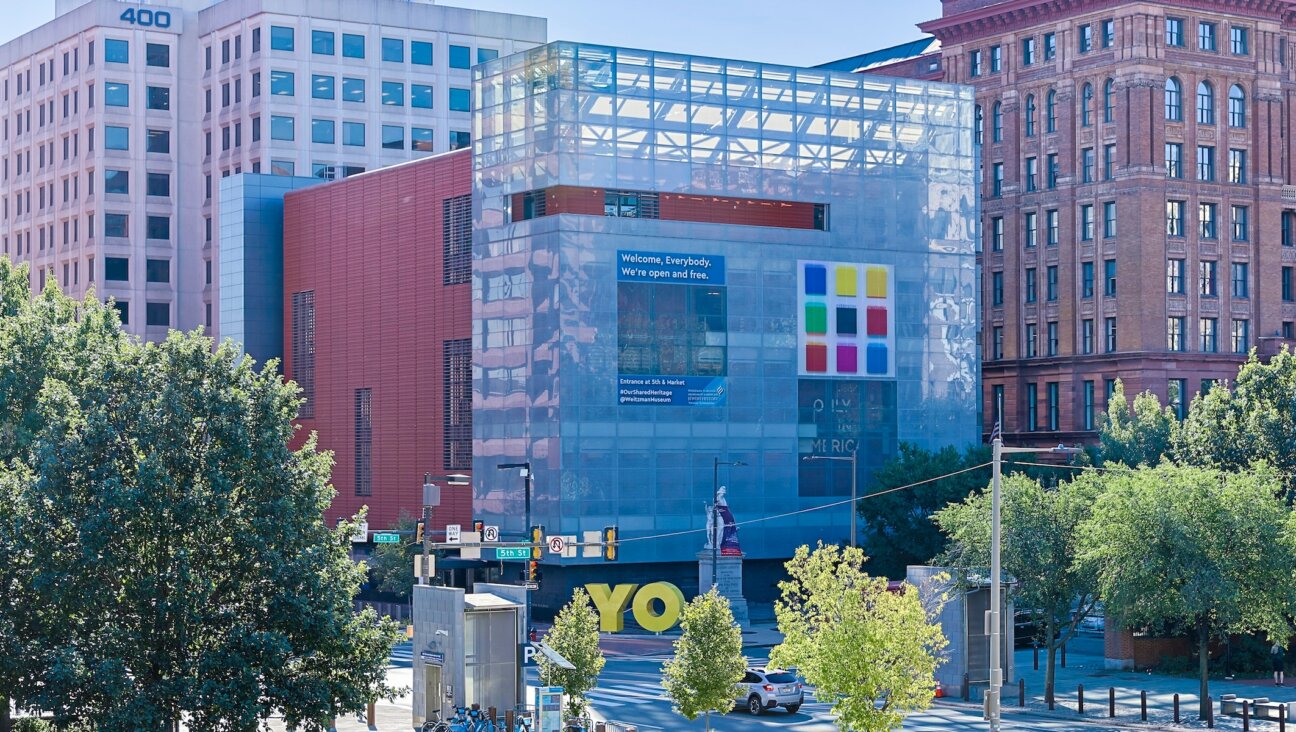A Golden Anniversary

Guggenheim Gala: Howard and Allison Lutnick at the opening of the Kandinsky exhibit. Image by Karen Leon
THE GUGGENHEIM AT 50
Abiding by the invitation’s directive, black tie and Kandinsky colors, for the September 16 celebration of the Guggenheim Museum’s 50th anniversary and the opening of the Kandinsky exhibit, Knight Landesman, executive editor of Artforum magazine, arrived in an eye-popping mango-colored suit. Among the 250 guests viewing the 100 Kandinsky works were Howard Lutnick, chairman and CEO of Cantor Fitzgerald and a Guggenheim Foundation board member, and his wife, Allison.
With the anniversary of 9/11 still resonating, it’s worth noting that 658 of Cantor-Fitzgerald’s employees on the 101st to 105th floors of One World Trade Center, died in the September 11, 2001, terrorist attack. Within a week, Lutnick, whose brother was among the victims, had the firm trading on line. He also pledged to distribute 25% of the firm’s profits for the next five years, plus health care coverage, to the families of the victims. By 2006, the victims’ families had received $180 million — profits that would otherwise have been distributed to Cantor Fitzgerald partners.
The Guggenheim-Kandinsky connection goes back to 1929, when Solomon Guggenheim began collecting canvases painted by abstract Russian artist Vasily Kandinsky. When a 1945 retrospective exhibit of 300 of Kandinsky’s works at the Museum of Non-Objective Art in New York indicated that the museum’s exhibition space was inadequate, Frank Lloyd Wright was commissioned to design what has become the landmark Solomon R. Guggenheim Museum on Fifth Avenue, which opened in 1959.
In contrast to the guests’ colorful Kandinsky-inspired garb, the setting for the dinner was that of an ice palace. The museum’s floor was dotted with pristine floor-length white linen covered tables, silver and Swarovski crystals and transparent plexiglass chairs. Before and after the dinner, guests could experience the premiere of a light installation called “Levels of Nothingness,” which was shown in the museum’s Peter B. Lewis Theater. Inspired by Kandinsky’s 1912 “Yellow Sound,” the light performance created by Rafael Lozano-Hemmer presented colors that were derived automatically from the human voice. Activating the voice-light installation was Isabella Rossellini, who read philosophical texts on skepticism, color and perception by Kandinsky, Simon Baron-Cohen, Robert Irwin and Alexander Luria. As she read, her voice, continually analyzed by computers, set in motion robotic, rock-and-roll concert lighting.
The event chairmen included Richard Armstrong, director of the Guggenheim Foundation and Museum, singer Art Garfunkel and actress Sarah Jessica Parker. The evening also honored Deutsche Bank, a Guggenheim corporate sponsor.
THE RED STAR LINE–A SEAFARING MAGIC CARPET FOR JEWISH IMMIGRANTS
A book launch party was held for “One Foot in America: Jewish Emigrants on the Red Star Line and Eugeen Van Mieghem” on September 10, at the YIVO Institute for Jewish Research. Among the “aha!” moments was the information that among the one million Jewish immigrants who came to America aboard a Red Star Line steamship between 1873 and 1934, were the family of Irving Berlin — Moses Beilin (his original name) and his eight children — Admiral Hyman Rickover’s parents, Golda Meir’s mother and Isaac Bashevis Singer’s sister, the writer Hinde Ester Kreiman. “Without Berlin there would be no ‘White Christmas’” Philip Haylen, a vice mayor of Antwerp, Belgium, told the rapt audience at the Center for Jewish History. Touting the planned opening of the Eugeen Van Mieghem Museum in 2012 in Antwerp, Haylen added: “Thirty years after [Berlin] crossed, the First Class shipboard orchestra played “White Christmas.” Among the evening’s speakers: Erwin Joos, the museum’s director and co-author of “One Foot” (BAI publishers, City of Antwerp) and Ludo Van Campenhout, a vice mayor and member of Parliament, who expounded on the historic Jewish presence which helped his city become “the second largest diamond center in the world.”
In the book’s chapter entitled, “Zeit Gezoent, Antwerp!” writer Luc Verheyen related Flemish author Marnix Gijsen recollection: “Around the turn of the 19th century, the streets of Antwerp teemed with a continuous influx of Eastern European migrants. Most of them were Jews trying to escape the pogroms in Russia, Poland…by moving to America and Canada…. These train-sick emigrants arrived in Antwerp Central Station…. from Galicia, Ukraine or Bessarabia….Upon arrival they fanned out to the Jewish district or the harbor [with its] emigrant boarding houses where they waited for their ship to America.” A footnote notes that the chapter’s heading is a translation of the [original Yiddish] “To your health, Antwerp!” from the farewell wish of the Jewish emigrant Mottel in the book of the same name by Sholem Aleichem.
“There is a 500-year-old connection between the Jewish community and Antwerp’s diamond market,” said Van Campenhout in his overview. “What New York is to money markets, Antwerp is to diamond markets. And 80% of the world’s rough diamonds and 50% of polished diamonds come through Antwerp.” With a smile, he added: “Our second best export is chocolates.”
Van Campenhout also spoke of the Marranos, the Sephardic Jews who sought refuge in Antwerp following their expulsion from Spain. He also touted Eugeen Van Mieghem (1875-1930), the artist who became famous for his portraits of immigrants and regular people around Antwerp harbor. He said Van Mieghem’s paintings were “the most authentic work we have of this period.”
A sprinkling of applause greeted the announcement that for the first time a Dutch translation of Sholem Aleichem’s “Adventures of Mottel: The Cantor’s Son” will be published.
Jonathan Brent, YIVO’s new executive director and CEO, said that YIVO provided 16 narratives to the Van Mieghem museum to fill in gaps of Jewish migration, adding: “The Red Star Line kept the dream of coming to America.”
The first Red Star Line ship departed from Antwerp in 1873. Although they transported millions of immigrants from Europe, the passenger ships were also floating luxury hotels. “First Class was equal to life in a five-star hotel with all amenities, including a swimming pool,” said the book. The book also informs: “The 1929 stock market crash was the beginning of the end. President [Franklin D.] Roosevelt attempted to breathe new life into the American fleet with his New Deal. American investors profited by letting the shipping companies, which were operating at a loss, be liquidated and investing their capital in their own country. Two Red Star Line ships plus the company name were sold in 1934 to Arnold Bernstein, who kept operating between Antwerp and New York … At the same time, there was an increase in the number of Jewish passengers fleeing from … Nazi Germany. Even Bernstein himself was not exempt. He was thrown into prison and his shipping company was confiscated. Bernstein was released right before the outbreak of World War II and left for New York. The Red Star Line ships ended up, by way of the German authorities, in the hands of its arch-rival, the Holland America Line, [which] seized the company name and immediately disposed of it. Only the memory of the Red Star Line would live on.”
FRENCH ARTIST CHRISTIAN BOLTANSKI’S LIFELONG STRUGGLE WITH HIS JEWISH IDENTITY.
When told that much of French artist Christian Boltanski’s work “had been influenced by the Holocaust,” I looked forward to my September 16 interview with him. Boltanski was in New York to promote the American release of his autobiography, “The Possible Life of Christian Boltanski” (MFA Publications), a psychoanalytic Q&A interview with writer Catherine Grenier. We met at the Cultural Services of the French Embassy. Although the book covers his wartime childhood, friendships, marriage, regrets and creative output, I was most interested in his self-perception as a Jew. Born in France on September 6, 1944, Boltanski recalled: “I remember always feeling ashamed of being Jewish … of wanting to be French … I didn’t like it when my mother — a Corsican and Christian — took me to the Jewish quarter. We had many Jewish friends and visiting them made me extremely uncomfortable … My grandfather was a left-wing Catholic. For bread, he only ate the trimmings from Communion wafers because you could get them cheap.” Boltanski, whose paternal grandparents “left [Odessa] Russia partly out of a wish to abandon Judaism … to be free” recounted, “When my father was 17, my grandmother, a nurse during World War I … made him enlist. ‘If you don’t come back with the Military Cross you are no longer my son.’”
“My father, a doctor, so wanted to be French. When he was 18, he became Catholic. Yet, my mother became very Jewish, ‘you must eat Jewish food,’ she’d tell me.”
Boltanski segued to German-occupied France during which time his parents staged a very public pre-divorce scene so that his father could be hidden under the floorboards of their house without the neighbors suspecting. “He was there for a year and a half. My brother, Luc, who was five years older than me, didn’t know his father was there.”
In the book, Boltanski describes his passion for painting. “A friend of my mother’s, an old Jewish lady, told her one day, ‘Your son’s an idiot. He’ll never amount to anything. He’s a very bad painter. We need to open a gallery, that way, at least, he’ll learn a trade.’ They opened the gallery, called it The Sunflowers, which showed only Yiddish art … sort of sub-Chagall painters who sell to the community. I was 20-21. At one point I realized Yiddish art was just about the ugliest thing in the world.”
Flash forward: Boltanski, whose installations, video and sound pieces, have been exhibited at the Centre Georges Pompidou, Paris, the Museum of Contemporary Art in Chicago, and the Whitechapel Art Gallery in London, focuses on Jewish concepts.
Among these are “Reserves: The Purim Holiday (1988) an installation of children’s faces below which is a collection of clothing. “Reserve Canada” (1990), an installation of layers of clothing hung along three walls. “As artists we recreate — we give life to people who are now no more,” he told me. (“Canada,” this was the name of the warehouse in concentration camps where the arriving victims’ clothing and belongings were piled high and which “lucky” prisoners sorted for shipment to Germany.) “This is about humans, not just about Jews,” Boltanski said. “You know in Japan they do not throw away clothing.”
He also expounded on his latest innovative project, called “Collecting Heartbeats.” He plans to collect the sounds of 10,000 heartbeats. The exhibit’s opening is scheduled for July 2010 in Japan. I asked him how he planned to exhibit heartbeats. Gleefully, he explained: “The subject sits with a stethoscope attached to a computer. You pay $2 and the subject gets a copy. This exhibit is [also] scheduled for Sweden, Paris, Germany, Korea, London.” As we parted, an upbeat Boltanski stated: “The more you think about a problem, the less sad you are … I feel lucky. I never work. I do everything for pleasure.”
A message from our CEO & publisher Rachel Fishman Feddersen

I hope you appreciated this article. Before you go, I’d like to ask you to please support the Forward’s award-winning, nonprofit journalism during this critical time.
We’ve set a goal to raise $260,000 by December 31. That’s an ambitious goal, but one that will give us the resources we need to invest in the high quality news, opinion, analysis and cultural coverage that isn’t available anywhere else.
If you feel inspired to make an impact, now is the time to give something back. Join us as a member at your most generous level.
— Rachel Fishman Feddersen, Publisher and CEO






















